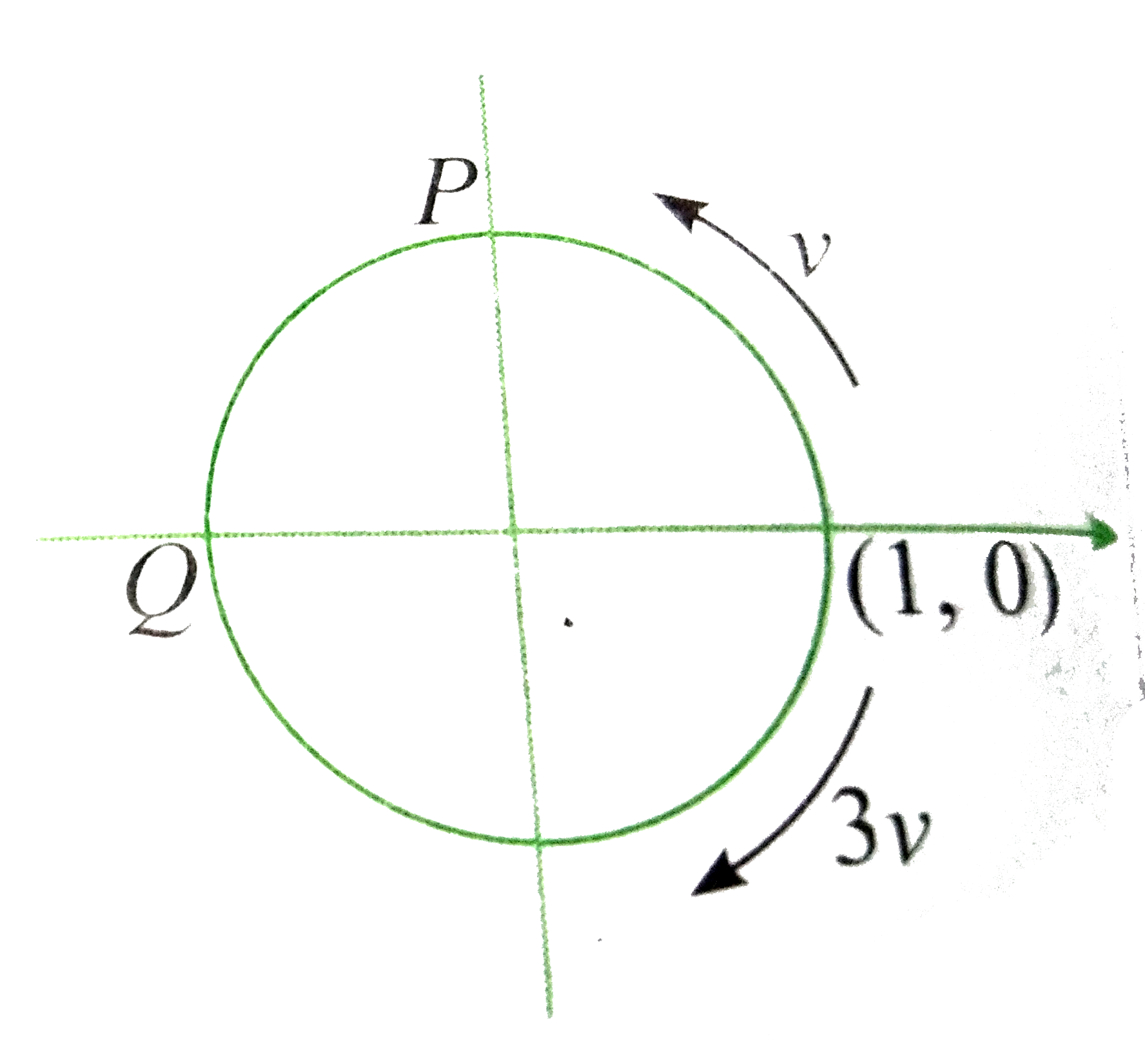A circle of radius unity is centered at thet origin. Two particles tart moving at the same time from the point (1,0) and move around the circle in opposite direction. One of the particle moves anticlockwise with constant speed v and the other moves clockwise with constant speed 3v. After leaving (1,0), the two particles meet first at a point P, and continue until they meet next at point Q. The coordinates of the point Q are
A
(1,0)
B
(0,1)
C
(0,-1)
D
(-1,0)
Video Solution
Text Solution
The correct Answer is:4
The particle which moves clockwise is moving three times as fast as the particle moving anticlockwise. This means the clockwise particle travels (3/4)th of the way around the circle, the anticlockwise particle will travel (1/4)th of the way around the circle. So, the second particle will meet at P(0,1). Using the same logic, they will meet at Q(−1,0) when the meet the second time.

|
Updated on:21/07/2023
Topper's Solved these Questions
- BOOK - CENGAGECHAPTER - CIRCLE EXERCISE - Exercise (Multiple)25videos
CIRCLE
- BOOK - CENGAGECHAPTER - CIRCLE EXERCISE - Exercise (Comprehension)46videos
CIRCLE
- BOOK - CENGAGECHAPTER - CIRCLE EXERCISE - Exercise 4.65videos
CIRCLE
- BOOK - CENGAGECHAPTER - BINOMIAL THEORMEXERCISE - Question Bank31videos
BINOMIAL THEORM
- BOOK - CENGAGECHAPTER - CIRCLESEXERCISE - Question Bank32videos
CIRCLES
Similar Questions
Knowledge Check
- Question 1 - Select One
Two particles starting from a point on a circle of radius 4m in horizontal plane move along the respectively in opposite directions. The particle will collide with each other after a time of
A3.0sB2.5sC2.0sD1.5s - Question 2 - Select One
A particle is moving in a circle with a constant speed. Its moving is
APeriodicBOscillatoryCSimple harmonicDboth 'a' and 'b' - Question 3 - Select One
A particle is moving in a circle with a constant speed, the acceleration of the particle has
Aconstant magnitudeBconstant magnitude and directionCboth magnitude and direction changesDneither magnitude nor direction changes
If a particle moves with a constant speed, the distance-time graph is
View SolutionIf a particle moves with a constant speed, the distance-time graph is
View SolutionTwo particles move in the same straight line starting at the same moment from the same point in the same direction. The first moves with constant velocity u and the second starts from rest with constant acceleralion f . Then
View SolutionA particle moves in a circle of radius 5 cm with constant speed and time period 0.2πs. The acceleration of the particle is
View SolutionA particle moves in a circle of radius 5 cm with constant speed and time period 0.2πs. The acceleration of the particle is
View Solution

